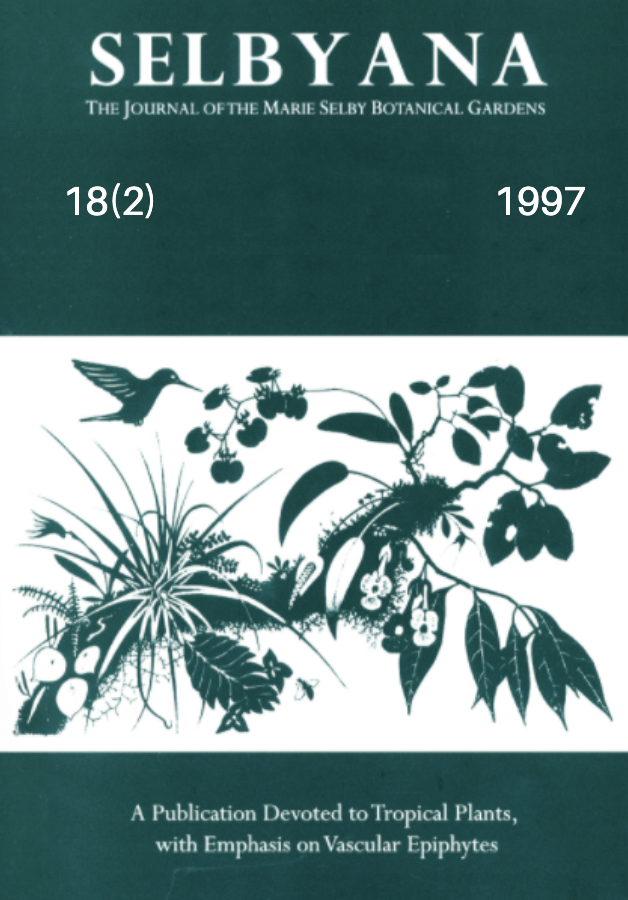Abstract
Persistence of any population depends on the ability of its members to reproduce, asexually or sexually. When reproductive success and/or survivorship are low, this may lead to population decline or in extreme cases extinction. Estimating population growth rate by matrix analysis is effective in determining population stability, although rarely used in orchids. The newly described epiphytic orchid Lepanthes caritensis, is limited to the Charco Azul area in the Carite Forest Reserve, Puerto Rico and occurs only on one species of tree, Micropholis guyanensis (Sapotaceae). Reproductive success, growth and survivorship of individuals of L. caritensis were recorded monthly for two years and a matrix analysis was applied to estimate the asymptotic growth rate of two populations. Reproductive effort was infrequent, few pollinaria were removed and fruit set was nil in both populations. Recruitment and mortality during the sampled years was 8.2% and 22.0% respectively. Mortality was significantly higher in juveniles as compared to adults (28.9% and 10.6% respectively). Recruitment of seedlings must have resulted from the presence of a seed bank or long distance seed dispersal. Intrinsic population growth rate was estimated at 0.995 and 0.999 for population one and two, respectively. Elasticity analysis suggests that non-reproductive adult stage in both populations is the most sensitive to change and would have the largest effect on the population growth rate as compared to other stages and reproductive success. The estimated half-life of Lepanthes caritensis populations is approximately 9.5 and 47 years for population one and two, respectively. Population persistance will depend on the consistency of the mortality rate and stochastic reproductive success.
Open Access and Copyright Notice
Selbyana is committed to real and immediate open access for academic work. All of Selbyana's articles and reviews are free to access immediately upon publication. There are no author charges (APCs) prior to publication, and no charges for readers to download articles and reviews for their own scholarly use. To facilitate this, Selbyana depends on the financial backing of the Marie Selby Botanical Gardens, the hard work and dedication of its editorial team and advisory board, and the continuing support of its network of peer reviewers and partner institutions.
Authors are free to choose which open license they would like to use for their work. Our default license is the Creative Commons Attribution-NonCommercial 4.0 (CC BY-NC 4.0). While Selbyana’s articles can be copied by anyone for noncommercial purposes if proper credit is given, all materials are published under an open-access license with authors retaining full and permanent ownership of their work. The author grants Selbyana a perpetual, non-exclusive right to publish the work and to include it in other aggregations and indexes to achieve broader impact and visibility.
Authors are responsible for and required to ascertain that they are in possession of image rights for any and all photographs, illustrations, and figures included in their work or to obtain publication or reproduction rights from the rights holders. Contents of the journal will be registered with the Directory of Open Access Journals and similar repositories. Authors are encouraged to store their work elsewhere, for instance in institutional repositories or personal websites, including commercial sites such as academia.edu, to increase circulation (see The Effects of Open Access).
